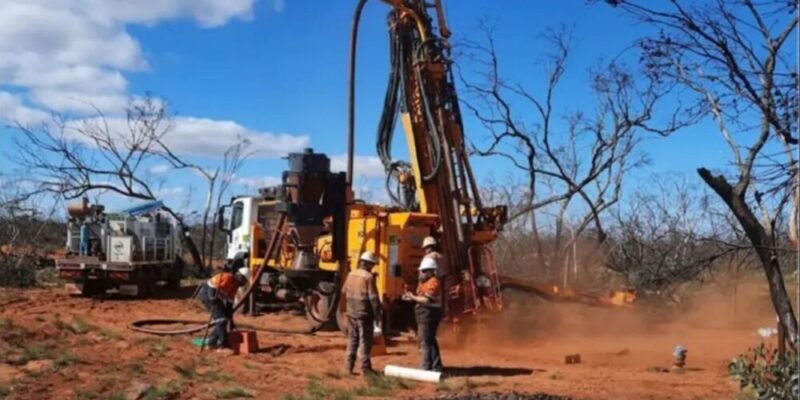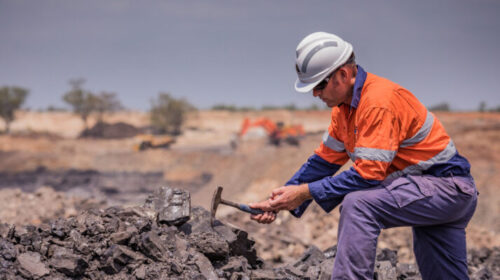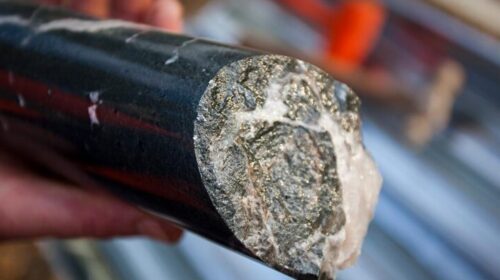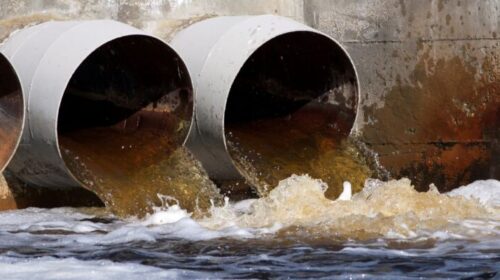Galileo starts drilling on Luansobe copper project in Zambia
London-listed Galileo Resources has commenced a 3 000 m core drilling programme on their Luansobe copper project, in Zambia.
The programme has been designed to infill gaps in historic drilling and twin selected holes, with a particular focus on shallow up-dip projections of the deposit.
The company has relogged historical drill core data dating from the 1950s and 1960s, with core from five holes being split for assaying of possible copper-bearing zones not previously recognised or considered of interest by earlier operators.
In this, assay results have returned 16 m grading 1.20% copper from 58 m, and 14 m grading 0.99% copper from 70 m.
The new data will be added to the drilling database.
Galileo aims to publish a mineral resource estimate and use it as a basis for openpit mine planning.
Galileo CEO Colin Bird.
“We are very pleased with our overall desktop review of the historic drill data for Luansobe and independent overview by Addison Mining Services. Re-examination of the old drill core found previously unrecognised copper-bearing zones of significant length. The work undertaken adds value to the modelling of a potential open pit and the new drill programme will define the extent and copper content, if any, of pre-strip for such a pit. We will aim to put a development contract out to tender early in Q4, 2022.
In essence, we are very pleased that our original prognosis regarding the open pit potential at Luansobe has been more than confirmed to date and our fast-track efforts have been fruitful.” Galileo CEO Colin Bird said.
Highlights
· Contract signed for a programme of approximately 3,000m of core drilling on potentially open pittable copper deposit at Luansobe; drilling to commence imminently
· Hole layout planned with input from Addison Mining Services of the UK, designed to infill gaps in historic drilling and twin selected holes, with a particular focus on shallow up-dip projections of the Luansobe deposit
· The aim will be to complete mineral resource estimates reported in accordance with JORC (2012) which will be used as the basis for potential open pit mine planning
· Re-logging of historic drill core dating from the 1950s and 1960s was completed, with core from five vertical holes being split for assaying of possible copper-bearing zones not previously recognised or considered of interest by earlier operators.
· Selected assay results received are shown in the table below and include:
o 16m @ 1.20% Cu from 58m in hole L0071
o 14m @ 0.99% Cu from 70m in hole L0069
· This new data will be added to the drilling database and have the potential to improve open pit economics by extending the intervals of known copper mineralisation
Historic Core Re-logging/Assaying
Re-logging of core from 30 historic drill holes was carried out for Galileo, comprising:
• Pre-cursor core search, retreival and remedial work
• Geotechnical logging
• Core photography
• Summary geological logging
• Noting of key / significant or obvious structural features
• pXRF screening of drill core
• Core cutting and re-sampling of drill core
Holes examined included both those within the conceptual open pit area, as well as holes along strike and down-dip which might be of value to an eventual underground mining operation on deeper mineralisation.
Based on first pass pXRF analytical measurements, intervals from five shallow holes, totalling 96 samples were selected for assay checking at the SGS Laboratory in Kalulushi on the Zambian Copperbelt. Of particular interest was an intermittently mineralised shale unit overlying the main stratigraphic target at Luansobe which had not been checked during the historic drilling. The more significant assay intervals are tabulated below:
| Luansobe Historic Core Assaying – Selected Intervals | ||||
| Hole No. | Depth from (m) | Depth to (m) | Interval (m) | Cu% |
| L0066 | 70 | 84 | 14 | 0.99 |
| L0071 | 58 | 74 | 16 | 1.20 |
| Incl. | 61 | 74 | 13 | 1.42 |
| L0040A | 124 | 127 | 3 | 0.55 |
The new data highlights the need to test this shallower zone in future holes and a positive outcome could improve the open pit project economics in future modelling.
Drill Planning
A programme of approximately 3,000m of core drilling is planned at Luansobe in up to 30 holes within, and marginal to, the conceptual open pit as currently modelled by Addison Mining Services of the UK. Planned holes will cover areas where re-modelling of the deposit shows that shallow copper potential was not adequately tested, where no assay data is available in the historic records or where previous holes appear not to have fully tested the main mineral horizons. Several holes will also be ‘twinned’ to confirm the historic data. When drilling and assaying is completed, mineral resource estimate will be prepared and reported in accordance with JORC (2012), which will then be utilised in open pit evaluation and planning.
Project Background
The Luansobe area is situated some 15km to the northwest of the Mufulira Mine in the Zambian Copperbelt which produced well over 9Mt of copper metal during its operation. It forms part of the northwestern limb of the northwest – southeast trending Mufulira syncline and is essentially a strike continuation of Mufulira, with copper mineralisation hosted in the same stratigraphic horizons. At the Luansobe prospect mineralisation occurs over two contiguous zones, dipping at 20-30 degrees to the northeast, over a strike length of about 3km and to a vertical depth of at least 1,250m.
![]()





